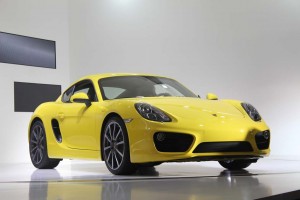Fiat/Chrysler CEO Sergio Marchionne may have put Alfa-Romeo out of the Volkswagen Group’s reach for now but there is a good reason to believe that VW is on the prowl for a 13th, and possibly even a 14th,brand to add to its large and varied stable of nameplates, according to industry observers.
While many manufacturers – notably General Motors and Ford – have been cutting back on their brand portfolios, Volkswagen AG Chairman Ferdinand Piech has been aggressively expanding the German maker’s marque count. VW last year finally completed the takeover of Porsche – brand number 12 — and Piech has continued to say he wants Alfa, despite Marchionne’s howls of protest.
Piech has indicated Europe’s largest automaker plans to add at least one brand to the current lineup as part of a strategy to claim the global auto industry’s sales crown by 2018.
Piech said in an interview with German monthly magazine ADAC Motorwelt that his children 10 years from now will drive one of the automaker’s “at least 13 brands.” VW representatives declined to comment.
The Wolfsburg, Germany-based automaker for now has enough work on its hands leading the divisions it already owns, Chief Executive Officer Martin Winterkorn said in August. VW has eight passenger car nameplates, a light commercial-vehicle unit, two heavy-truck makers and one motorbike brand, having acquired Ducati a year ago.
Piech, however, seemed undeterred by such challenges, though he has yet to explain which other brands he’d like to take on – or how he expects to acquire them.
But VW insiders familiar with the company’s operations, who asked not to be identified, suggested there are a couple of possibilities.
For starters, VW is under pressure from Chinese authorities to create a new brand in China. The Chinese want western and Asian automakers operating in the booming nation to create distinctively Chinese brands designed at least to appeal to customers in smaller cities and rural areas.
That led General Motors to create the Baojun brand with its Chinese partners SAIC and Wuling Motors in 2011 , while Nissan and its Chinese ally recently launched the Venucia brand.
VW, which vies with GM to dominate the Chinese market, has so far resisted regulators’ demands, but it appears to be moving closer to adding a new brand in China. Not only does VW want to keep the Chinese authorities happy, the addition of a second brand may be driven by necessity. The current brands, including VW and Skoda are not in position where they can reduce prices to appeal to a broader section of Chinese consumers.
Bringing on a new brand with vehicles priced at under $9,000 or $10,000 actually makes sense as the Chinese market continues to develop, according to one knowledgeable VW official, who asked not to be identified.
There are still other ways VW could up its brand tally.
The German maker has a long-standing relationship with the Proton, an independent automaker based in Malaysia that has a strong presence in promising markets in Southeast Asia such as Indonesia. Proton’s management, which is facing increasingly expensive effort to develop new vehicles, could decide it makes more sense to join the VW Group, which has ample resources to fund such programs.
In fact, if VW were to acquire Proton it could get a 2-for-1 brand deal since the Malaysians also operate British sports car maker Lotus – which could use some deep pockets to promote its own, ambitious product development program.



Piech’s obsession to be “#1” is car sales volume may spell economic doom for the VW Group in the not too distant future. Buying other brands to get the sales numbers is risky, especially in the current world wide economy meltdown. Ask Porsche how risky it can be…
There’s no question that a strategy of accruing a long list of brands is a high-risk approach and could backfire if the maker can’t deliver the flexibility in design, both exterior and interior, and come through with other attributes that separate the brands. Indeed, we saw that begin to trouble VW a couple product cycles back.
Compounding — or offsetting — this issue is VW’s shift to its platform strategy in which less than a half-dozen basic modular units will serve all of the various Group brands, from Seat and Skoda to Audi, Bentley and even Porsche. I say this because one could argue that having some basic, highly flexible platforms might make it very simple to cut costs and put the money into the elements of the various products that actually matter…or one could counter that this approach is doomed to force VW to badge engineer, as did GM in the 1980s.
It’ll be interesting to see which proves true.
Paul A. Eisenstein
Publisher, TheDetroitBureau.com
The high end cars in VAG portfolio are easier to distinguish because there is enough profit in these vehicles(Lamborghini,Bentley,Porsche,Bugatti).
However the lower rung vehicles VW,Skoda,Seat all have the VW DNA when you look at them inside and out.Of course the fear is that if Marchionne would actually break down and sell Alfa to VAG that it’s heritage would be ruined. VAG tried to make Seat another Alfa. However Seat has not performed well in sales. It would be easy for VAG to scuttle Seat and replace it with Alfa. I am actually surprised that VAG did not make a play for Proton after it failed with Suzuki.
I would yet expect something to happen with Proton and Lotus…and let’s wait to see how Alfa does with its U.S. revival. If that flops I’d expect Fiat to sell the brand. But if the initial impressions of the 4C hold up, well, that’s another story.
Paul A. Eisenstein
Publisher, TheDetroitBureau.com